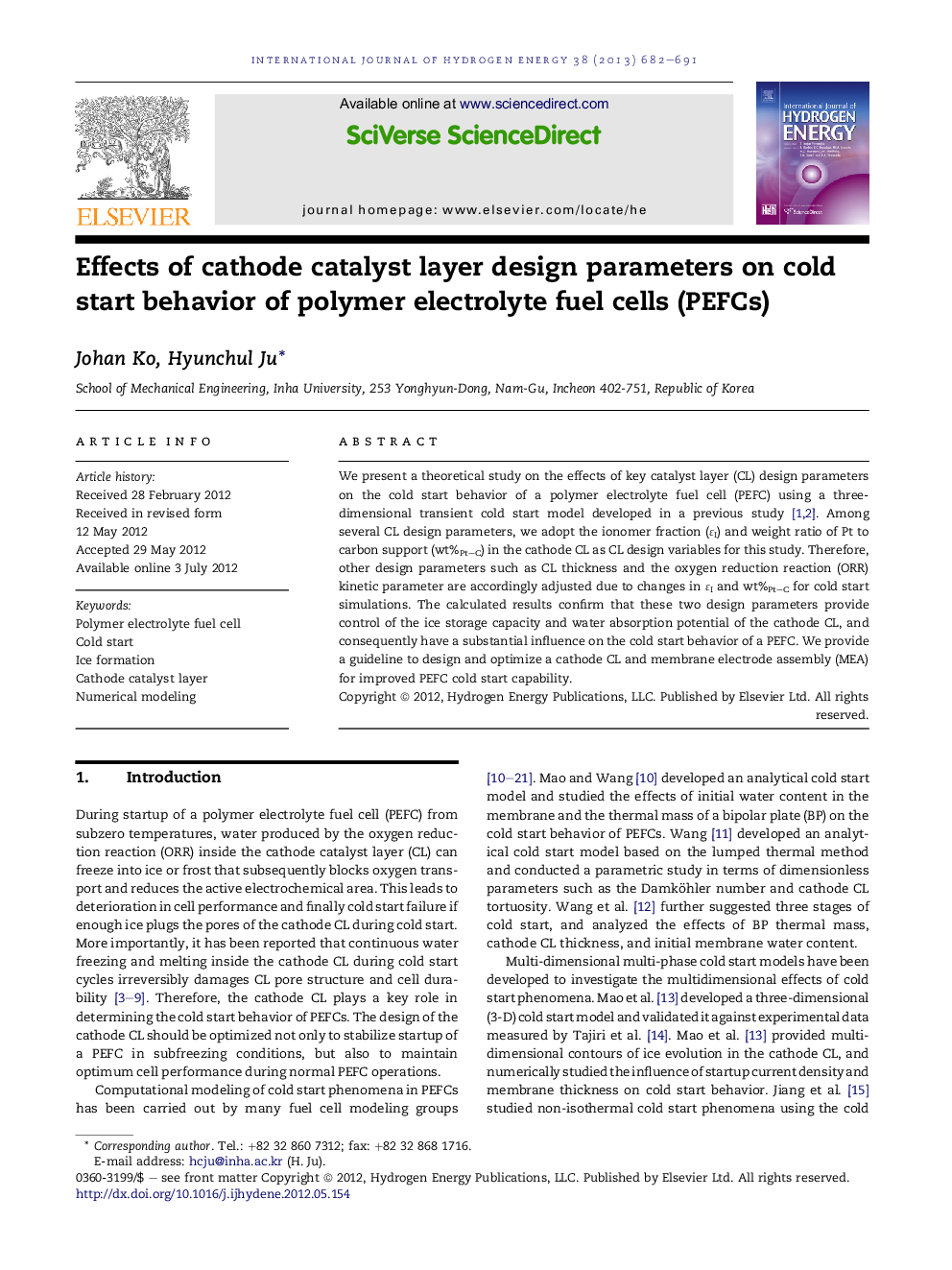| Article ID | Journal | Published Year | Pages | File Type |
|---|---|---|---|---|
| 1274419 | International Journal of Hydrogen Energy | 2013 | 10 Pages |
We present a theoretical study on the effects of key catalyst layer (CL) design parameters on the cold start behavior of a polymer electrolyte fuel cell (PEFC) using a three-dimensional transient cold start model developed in a previous study [1] and [2]. Among several CL design parameters, we adopt the ionomer fraction (ɛI) and weight ratio of Pt to carbon support (wt%Pt–C) in the cathode CL as CL design variables for this study. Therefore, other design parameters such as CL thickness and the oxygen reduction reaction (ORR) kinetic parameter are accordingly adjusted due to changes in ɛI and wt%Pt–C for cold start simulations. The calculated results confirm that these two design parameters provide control of the ice storage capacity and water absorption potential of the cathode CL, and consequently have a substantial influence on the cold start behavior of a PEFC. We provide a guideline to design and optimize a cathode CL and membrane electrode assembly (MEA) for improved PEFC cold start capability.
► We studied the effects of cathode CL design parameters on the cold-start behavior. ► Decreasing the wt% of Pt–C in the cathode CL retards the rate of ice growth. ► Higher ionomer fraction improves both cell performance and cold start behavior.
